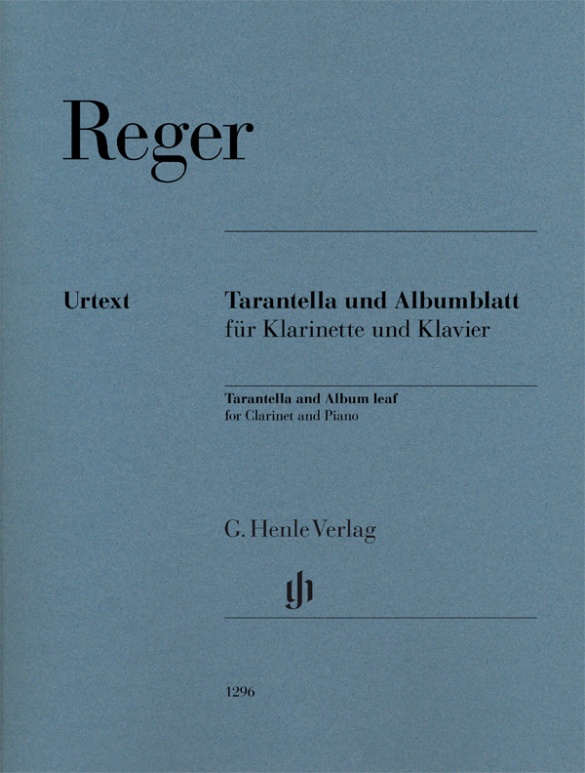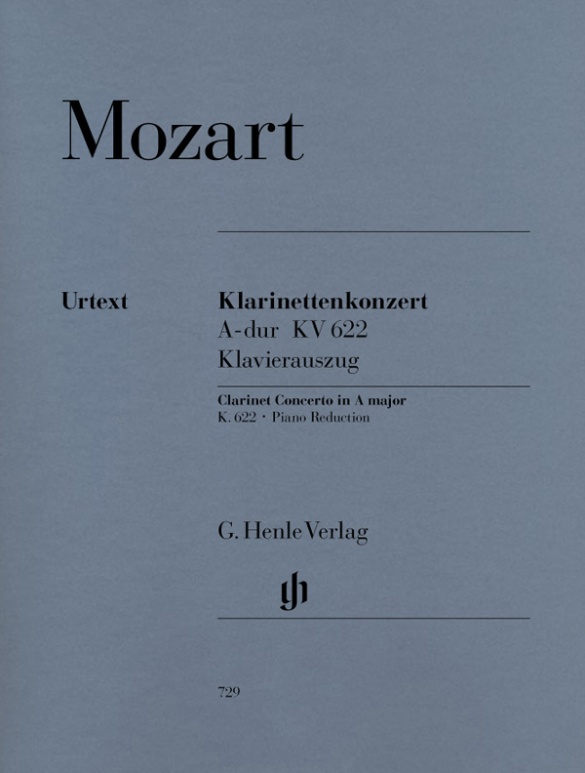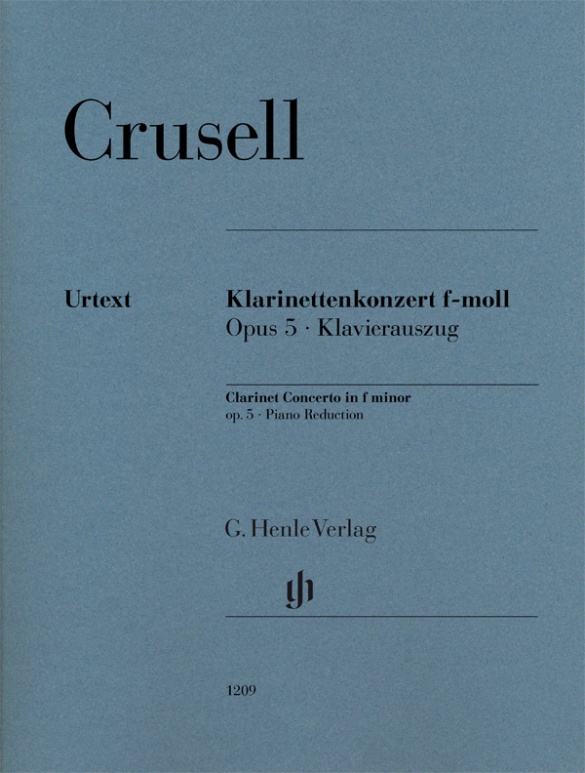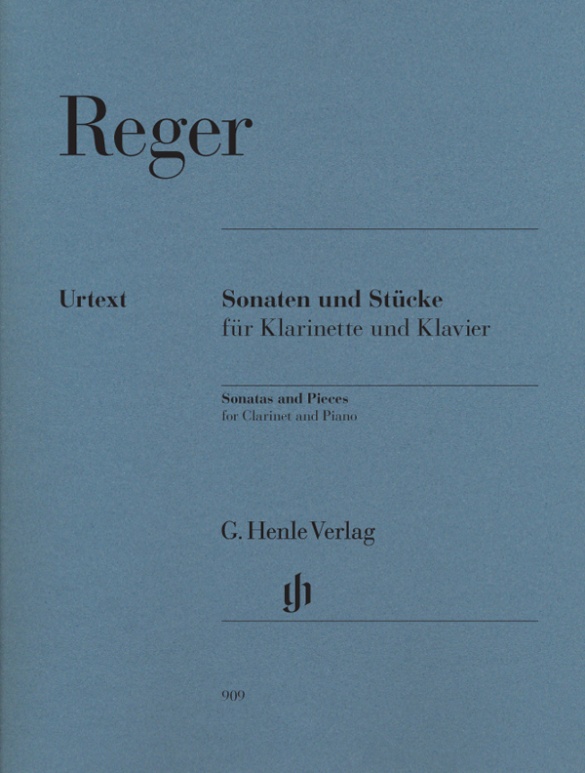

Max Reger
Sonatas and Pieces for Clarinet and Piano
Eight years after he had composed his first two Clarinet Sonatas op. 49, Reger confessed in a letter to a friend that he was once again committing "a new crime against harmony and counterpoint". He was referring to the Sonata for Clarinet and Pianoforte op. 107.
Reger made a point of not destroying the chamber music character of the work by having too much virtuosic padding. "Brahms developed classic examples of what the style was meant to be like". Alongside the sonatas, our Urtext edition also contains two charming "encores": a Tarantella in g minor and an Album Leaf in E flat major. The Sonata op. 49,2 is for clarinet in A. The other pieces are for clarinet in B flat.
Content/Details
About the Composer
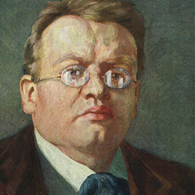
Max Reger
Late-Romantic composer who combines a chromatic tonal language with Baroque and Classical forms, thus anticipating 1920s neoclassicism.
| 1873 | Born in Brand (Upper Palatinate) on March 19, the son of a teacher. First piano lessons from his mother. |
| 1888 | After a visit to Bayreuth (for Meistersinger and Parsifal), decides on a career in music. |
| 1890–93 | Studies with Hugo Riemann at the conservatory in Wiesbaden, composes chamber works. Thereafter he endeavors to publish his own works as a freelance composer, albeit with multiple failures. |
| 1898 | Return to his parents’ home in Weiden. Composition of organ works: choral fantasies, “Fantasy and Fugue on B-A-C-H,” Op. 46 (1900); Symphonic Fantasy and Fugue (“Inferno”), Op. 57. |
| 1901–07 | Living in Munich. |
| 1903 | Publication of his “On the Theory of Modulation,” causing Riemann to feel attacked because Reger espouses a different understanding of the role of chromatics. “Variations and Fugue on an Original Theme,” Op. 73. |
| 1904 | Breakthrough with his first performance for the Allgemeine Deutsche Musikverein (General German Music Association). First volume of his “Simple Songs” for voice and piano, Op. 76; String Quartet in D minor, Op. 74, one of the most significant works in that genre at the beginning of the century. |
| From 1905 | Instructor at Munich’s Academy of Music. “Sinfonietta” in A major, Op. 90. |
| 1907–11 | Music director and professor of composition at the University of Leipzig. Orchestral work “Variations and Fugue on a Theme by Hiller,” Op. 100. |
| 1909 | “The 100th Psalm,” Op. 106, his most popular choral work. |
| 1911–14 | Director of the royal court orchestra of Saxe-Meiningen. |
| 1912 | “Concerto in the Old Style,” Op. 123. Orchestral song “An die Hoffnung” (“To Hope”), Op. 124. |
| 1913 | “Four Tone Poems after A. Böcklin” for large orchestra, Op. 128; “A Ballet Suite,” Op. 130. |
| 1914 | “Variations and Fugue on a Theme by Mozart,” Op. 132 |
| 1915 | He resides in Jena. Late compositions. |
| 1916 | Death in Leipzig on May 11. |
About the Authors

Michael Kube (Editor)
Dr. Michael Kube, born in 1968 in Kiel, studied musicology (with Friedhelm Krummacher and Heinrich W. Schwab), the history of art and ethnology at the Christian-Albrechts-Universität zu Kiel. Since 1998 he has been a research associate at the New Schubert Edition (Tübingen) and since autumn 2002 also a member of the editorial board.
Kube is on the panels of different juries and music prizes, and is also a member of the Committee for work evaluation (Werkprüfungsausschuss) of VG Music Edition. His research interests include music for keyboard instruments around 1700, 19th century chamber music, early 20th century music history, as well as Scandinavian music history.
Product Safety Informations (GPSR)

G. Henle Verlag
Here you can find the information about the manufacturer of the product.G. Henle Verlag e.K.
Forstenrieder Allee 122
81476 München
Germany
info@henle.de
www.henle.com
Alle diese Werke liegen nun im G. Henle Verlag in gewohnt ausgezeichneten Urtext-Ausgaben vor, die insbesondere bei den Sonaten eine echte Bereicherung und Verbesserung im Vergleich zu bisherigen Editionen bedeuten (...). Endlich eine Ausgabe mit Taktzahlen! Die Lesbarkeit des so undurchdringlichen Klavierparts hat durch mehr Großzügigkeit entscheidend gewonnen, und auch die Klarinettenstimme stellt sich freundlicher, übersichtlicher und mit mehr Raum für Eintragungen dar.
Das Liebhaberorchester, 2016Das Notenmaterial für eine Auseinandersetzung mit den Klarinettenwerken Regers ist (...) in optimaler Weise vorhanden.
Die Tonkunst, 2015Die Henle-Ausgabe demonstriert den hohen Standard des Münchener Verlags und liefert zugleich einen Beweis dafür, dass Regers Musik inzwischen wieder "in Ehren aufgenommen" worden ist, nachdem in den letzten fünfzig Jahren eigentlich nur noch Organisten ihm die Treue hielten.
Ensemble, 2014Die vorliegende Henle'sche Urtext-Ausgabe besticht durch Akribie und gleichermaßen Umsicht des prominenten Musikwissenschaftlers und Herausgebers Kube, also auch durch Verlässlichkeit in der Textkritik gemäß den hohen Verlagsmaßstäben. Aus der zunehmenden Würdigung des Werks von Max Reger (...) strahlt nun (...) eine ersehnte hochqualitative Bündelung der drei Sonaten und der Tarantella mit ihrem symbiotisch verbundenen Albumblatt hervor. (...) Dem hervorragenden 122-seitigen Band gebührt jede Empfehlung.
Das Orchester, 2013推荐
autogenerated_cross_selling
本书目其他版本
本书目其他版本


